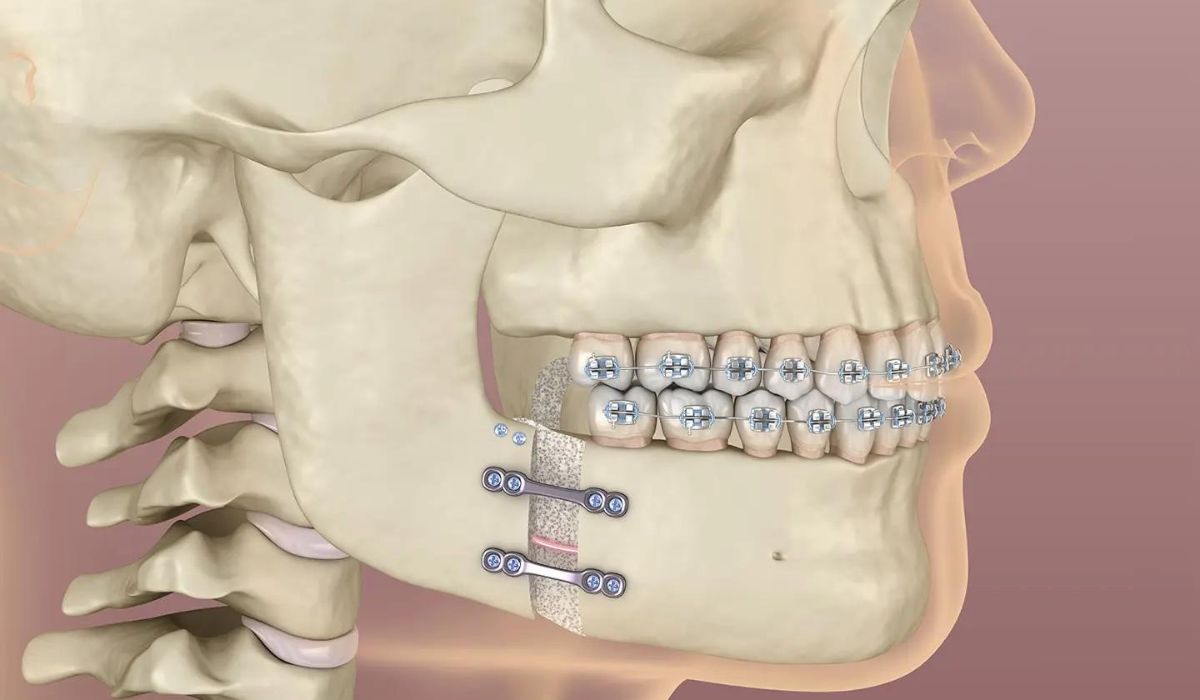Orthognathic surgery (more often known as jaw surgery) has the potential to improve not only a person’s oral health and overall quality of life, but also their outward appearance. Correcting functional, cosmetic, and health issues with jaw abnormalities is the primary motivation for this complex surgical procedure.
The Need for Jaw Surgery
- Functional Impairments: Disabilities in chewing, speaking, and even breathing might result from jaws that aren’t properly aligned. Improper dental occlusion and the accompanying pressure on the jaw joints can be caused by conditions including malocclusions (misaligned teeth) and skeletal jaw discrepancies.
- Aesthetic Concerns: Concerns about how the procedure will look are a valid consideration when planning jaw surgery. The position of the jaws has a major impact on the overall appearance of the face, and a misalignment can have a negative effect on a person’s sense of pride and self-assurance. Jaw surgery can correct the appearance of an overbite, underbite, or open bite.
- Obstructive Sleep Apnea (OSA): Jaw surgery is sometimes used to treat obstructive sleep apnea (OSA), a disorder in which breathing is interrupted intermittently during the night because of a blockage in the airway. The intensity of OSA symptoms can be reduced by repositioning the jaws to open up the airway.
The Surgical Process
- Comprehensive Evaluation: An expert oral and maxillofacial surgeon should do a comprehensive evaluation. Imaging techniques including X-rays, 3D scans, and models help doctors make a correct diagnosis and develop a targeted treatment strategy.
- Preoperative Preparation: In order to align teeth and guarantee good dental occlusion, orthodontic treatment is often begun before surgery. This helps get the desired results from the surgery.
- Surgical Techniques: Correcting misalignments in the jaw requires precise surgical techniques, including the cutting and repositioning of bones. Depending on the patient’s condition, the surgeon may operate on either the upper (maxilla) or lower (mandible) jaw, or both.
Recovery and Rehabilitation
- Postoperative Care: Patients may have swelling, pain, and limited oral function after surgery. The recuperation phase requires pain medication, a gentle diet, and regular dental care.
- Orthodontic Follow-up: After an orthodontic procedure, adjustments are made to the bite and the teeth’s new placements to make sure everything fits together nicely.
- Long-term Benefits: Positive effects of jaw surgery go far beyond cosmetics, and they persist over time. The benefits are numerous, including better chewing function, less stress on the temporomandibular joints (TMJ), and clearer speech.
Considerations and Risks
- Treatment Duration: The entire treatment process, including orthodontic planning, surgery, and follow-up changes, can take anywhere from several months to more than a year.
- Potential Complications: Potential Complications Infection, nerve damage, and severe reactions to anesthesia are just some of the dangers that might arise during surgery. However, because to careful planning and the experience of the surgical team, these dangers are kept to a minimum.
Conclusion
Through jaw surgery, patients can address functional impairments, boost self-esteem, and enrich their lives. Because of improvements in surgical methods, diagnostic equipment, and postoperative care, orthognathic surgery is now commonly used to treat a variety of jaw disorders. Jaw surgery has the potential to significantly improve the quality of life for those who seek both functional and cosmetic improvements as technology and medical knowledge advance.
FAQs
What is jaw surgery, and who is it suitable for?
Orthognathic surgery, which is another name for jaw surgery, is performed to treat jaw misalignments. It’s a good option for people whose jaw irregularities cause them to have trouble chewing, talking, or even breathing. Overbites, underbites, and open bites are just some of the cosmetic dental issues it may fix, making it a popular option among those looking to improve their smile’s overall look.
How do I know if I need jaw surgery?
It is recommended to see an oral and maxillofacial surgeon if you have recurrent jaw pain, trouble chewing or speaking, or a visibly misaligned jaw. They can examine you physically, take X-rays, and perform 3D scans to decide if jaw surgery is necessary.
What is the process of jaw surgery like?
An extensive examination, including diagnostic testing and an individual treatment strategy, is required. Aligning teeth prior to surgery may be necessary. In order to do the operation, the surgeon must carefully cut and reposition bones. After surgery, patients must undergo a period of recovery during which they must deal with side effects like as edema and altered oral function.
Is jaw surgery a painful procedure?
Anesthesia is used during jaw surgery to keep the patient from feeling any discomfort. Pain after surgery, while common, is usually treatable with medicine. While some people may still be in a lot of pain, modern pain relief methods have made a huge difference.
How long is the recovery period after jaw surgery?
Although everyone is different, most people start to feel better after a few weeks. In most cases, soreness and swelling will fade away within the first month, allowing you to get back to your regular lifestyle. Over a longer period of time, maybe spanning several months, orthodontic modifications will continue to fine-tune the alignment of your bite.











